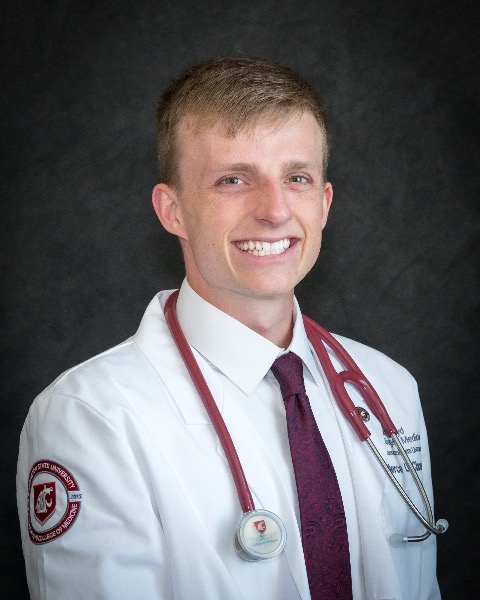Back
Poster Session E - Tuesday Afternoon
E0623 - Widespread Underrepresentation of Gastroenterology Expertise in the Media on Digestive Health Topics
Tuesday, October 25, 2022
3:00 PM – 5:00 PM ET
Location: Crown Ballroom

Pierce L. Claassen, BS
Washington State University Elson S. Floyd College of Medicine
Clarkston, WA
Presenting Author(s)
Introduction: Misinformation has serious implications on public health. Medical training has not traditionally prepared health professionals for communication with general public through media. The current representation of gastroenterologists (GI) in the media concerning digestive health topics is not well understood. Our study aims to characterize GI involvement in media coverage of common gastrointestinal health topics.
Methods: All online news published in 1/1-11/15/2021 concerning 5 common digestive health topics were queried from Google News. Variables of interest include topic queried (“IBS”, “IBD”, “reflux”, “fatty liver”, “gastroparesis”), source type (medical journal, medical press, national/international lay media, local news, non-medical blog posts, press releases), presence of medical professional, GI involvement, and GI affiliation (academic vs non-academic). Statistical analysis was performed using a chi-squared test.
Results: A total of 1830 online news articles on digestive health topics were analyzed, with 40.4% and 59.6% from medical and lay press, respectively. Of all articles, 59% included medical professional involvement and 31% included GI representation. Input from naturopathic/homeopathic practitioners was found in 2.4%. Medical professional involvement (66.5% vs 48.1%, p< 0.0001) and GI representation (53.8% vs 46.4%, p< 0.019) were significantly higher in medical versus lay press. Percentage of stories involving GI was lowest in articles concerning gastroparesis (29.9%) and reflux (38.5%) topics, and highest in IBD (56.4%) and IBS (63.4%) (p< 0.0001). There was no difference in academic GI representation between medical versus lay press (29.8% vs 25.0%, p=0.50). Non-academic GI were most commonly seen in stories about reflux (42.2%) and IBS (35.8%), compared to IBD (22.9%), gastroparesis (10.0%), and fatty liver (11.9%) (p< 0.0001).
Discussion: Despite covering digestive health topics, nearly half of all medically-oriented and lay press coverage did not feature GI or include their contributions. Without input/oversight of trained experts, appropriate clinical context may be neglected and misinformation perpetuated, especially by lay media outlets. The absence of GI from media coverage disproportionately affected some subject areas. Relationships between professional GI community and media outlets should be cultivated, and GI should be exposed to communication/media training to better engage with lay audiences.
Methods: All online news published in 1/1-11/15/2021 concerning 5 common digestive health topics were queried from Google News. Variables of interest include topic queried (“IBS”, “IBD”, “reflux”, “fatty liver”, “gastroparesis”), source type (medical journal, medical press, national/international lay media, local news, non-medical blog posts, press releases), presence of medical professional, GI involvement, and GI affiliation (academic vs non-academic). Statistical analysis was performed using a chi-squared test.
Results: A total of 1830 online news articles on digestive health topics were analyzed, with 40.4% and 59.6% from medical and lay press, respectively. Of all articles, 59% included medical professional involvement and 31% included GI representation. Input from naturopathic/homeopathic practitioners was found in 2.4%. Medical professional involvement (66.5% vs 48.1%, p< 0.0001) and GI representation (53.8% vs 46.4%, p< 0.019) were significantly higher in medical versus lay press. Percentage of stories involving GI was lowest in articles concerning gastroparesis (29.9%) and reflux (38.5%) topics, and highest in IBD (56.4%) and IBS (63.4%) (p< 0.0001). There was no difference in academic GI representation between medical versus lay press (29.8% vs 25.0%, p=0.50). Non-academic GI were most commonly seen in stories about reflux (42.2%) and IBS (35.8%), compared to IBD (22.9%), gastroparesis (10.0%), and fatty liver (11.9%) (p< 0.0001).
Discussion: Despite covering digestive health topics, nearly half of all medically-oriented and lay press coverage did not feature GI or include their contributions. Without input/oversight of trained experts, appropriate clinical context may be neglected and misinformation perpetuated, especially by lay media outlets. The absence of GI from media coverage disproportionately affected some subject areas. Relationships between professional GI community and media outlets should be cultivated, and GI should be exposed to communication/media training to better engage with lay audiences.
